A 19x growth in yields
Average yields on short-term bonds shot up from a low of 0.22% in February 2021 to 4.40% in December 2024, reaching their highest levels in more than 22 years along the way.
Rising yields*
⬤ February 2021
⬤ December 2024
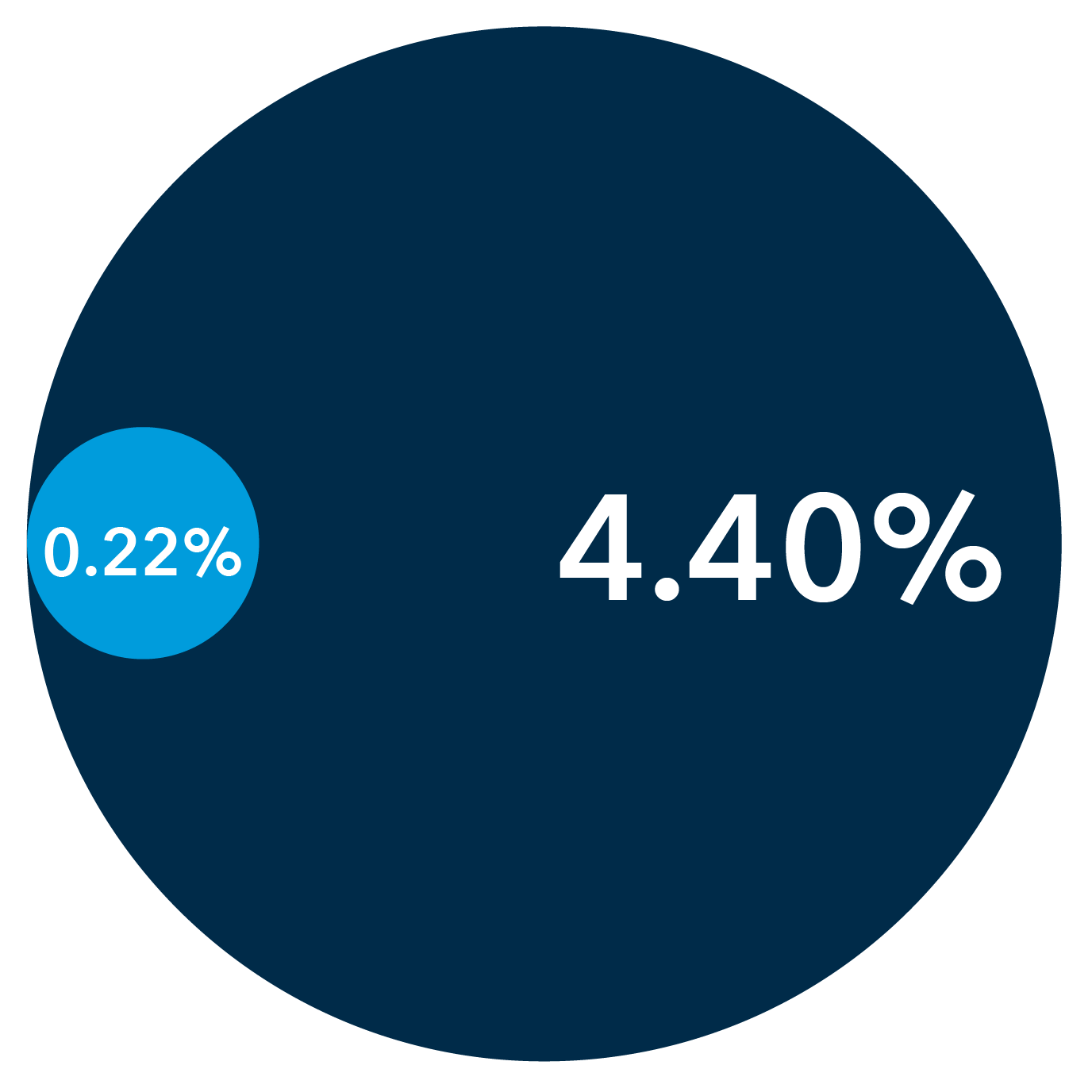
Starting yields on short-term bonds surpass the levels once offered on high-yield bonds in early 2022.†
Source: Bloomberg. Data as of 12/31/24.
*Yields shown are yield to worst for the Bloomberg U.S. Government/Credit (1-3 years) Index.
†Based on a comparison of the yield to worst from the Bloomberg U.S. Government/Credit (1-3 years) Index and the Bloomberg U.S. Corporate High Yield 2% Issuer Capped Index.
Find your footing with short-term bonds
Market volatility has led some investors to take shelter in money market accounts, which now account for $6.8 trillion¶ of holdings. As inflation cools and the Federal Reserve lowers rates, short-term bonds may provide an attractive re-entry point to the market.
Seek more from cash#
A. Short-Term Bond Fund of America®
B. American Funds Short-Term Tax-Exempt Bond Fund® (Tax-equivalent yield shown)
C. Limited Term Tax-Exempt Bond Fund of America® (Tax-equivalent yield shown)
D. Intermediate Bond Fund of America®
E. Money market
F. Core
G. Treasury
H. Long Treasury
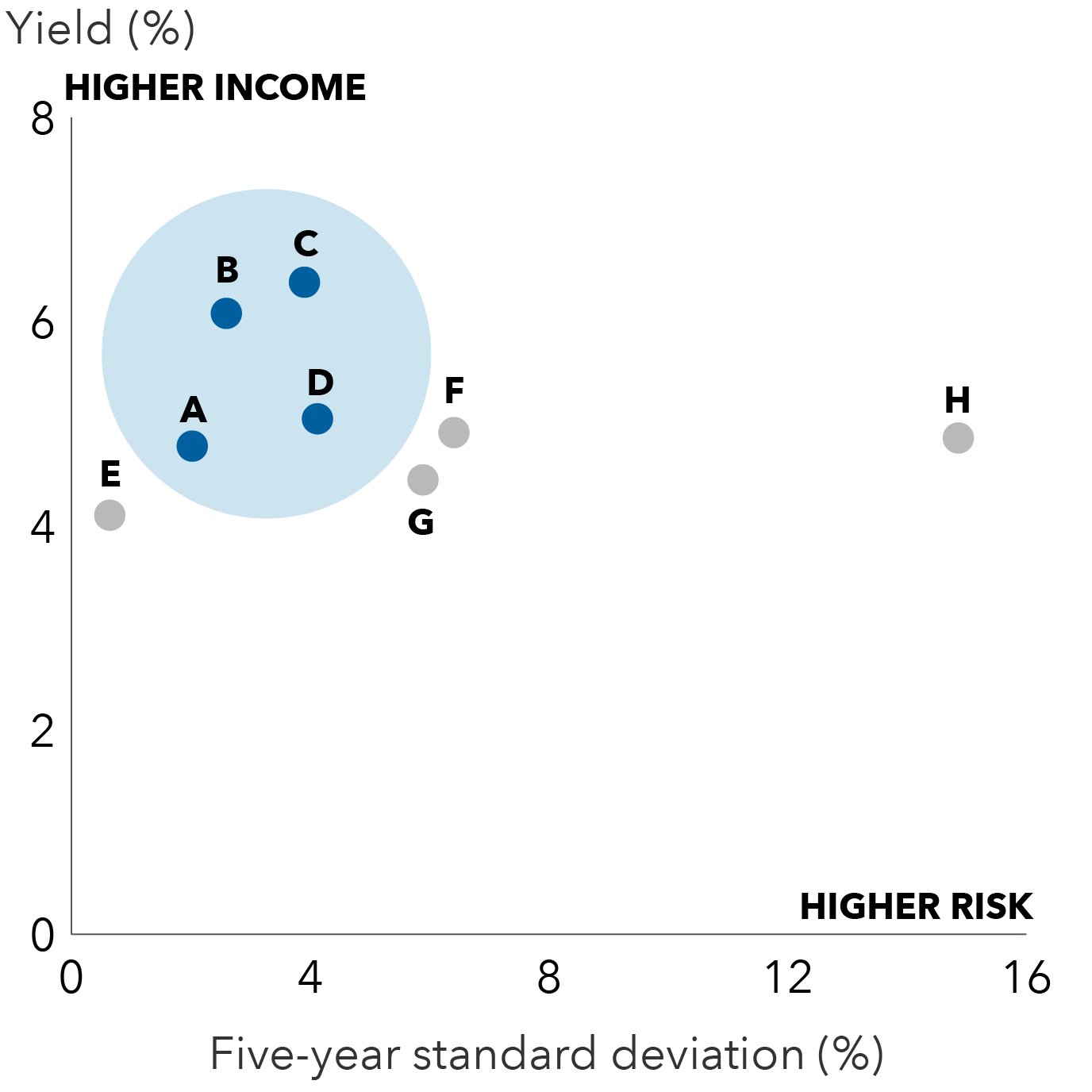
Our short-term bond funds aim to deliver stronger income than cash-like investments while limiting the volatility associated with longer term bond strategies.
Sources: Bloomberg, Capital Group, Morningstar. Data as of 12/31/24.
Yields shown are yield-to-worst for the taxable funds and indexes, and tax-equivalent yields for the tax-exempt funds. Fund inception dates: Short-Term Bond Fund of America: 10/2/06, Intermediate Bond Fund of America: 2/19/88, American Funds Short-Term Tax-Exempt Bond Fund: 8/7/09, Limited Term Tax-Exempt Bond Fund of America: 10/6/93. Money market yield is the Morningstar Prime Money Market Category average 7-day SEC yield. Core: Bloomberg U.S. Aggregate Index. Treasury: Bloomberg U.S. Treasury Index. Long Treasury: Bloomberg U.S. Long Treasury Index. Tax-equivalent yield = tax-free municipal bond yield / (1 – tax rate). (Based on a federal marginal tax rate of 37%, the top 2024 rate. In addition, we have applied the 3.8% Medicare tax.)
¶Source: Bloomberg. Data as of 12/31/24.
#Please see important information below regarding the different characteristics of the types of investments shown.
A focus on capital preservation
Capital Group’s suite of short-term bond funds are focused on capital preservation through high-quality, diversified investments guided by more than 50 years of experience in fixed income markets.
SBFFX
SHORT-TERM BOND FUND OF AMERICA (F-2)
91%
Positive 3-year rolling (monthly) returns since inception
0%
of the fund’s holdings are rated BB+ and below
Diversify to help improve returns
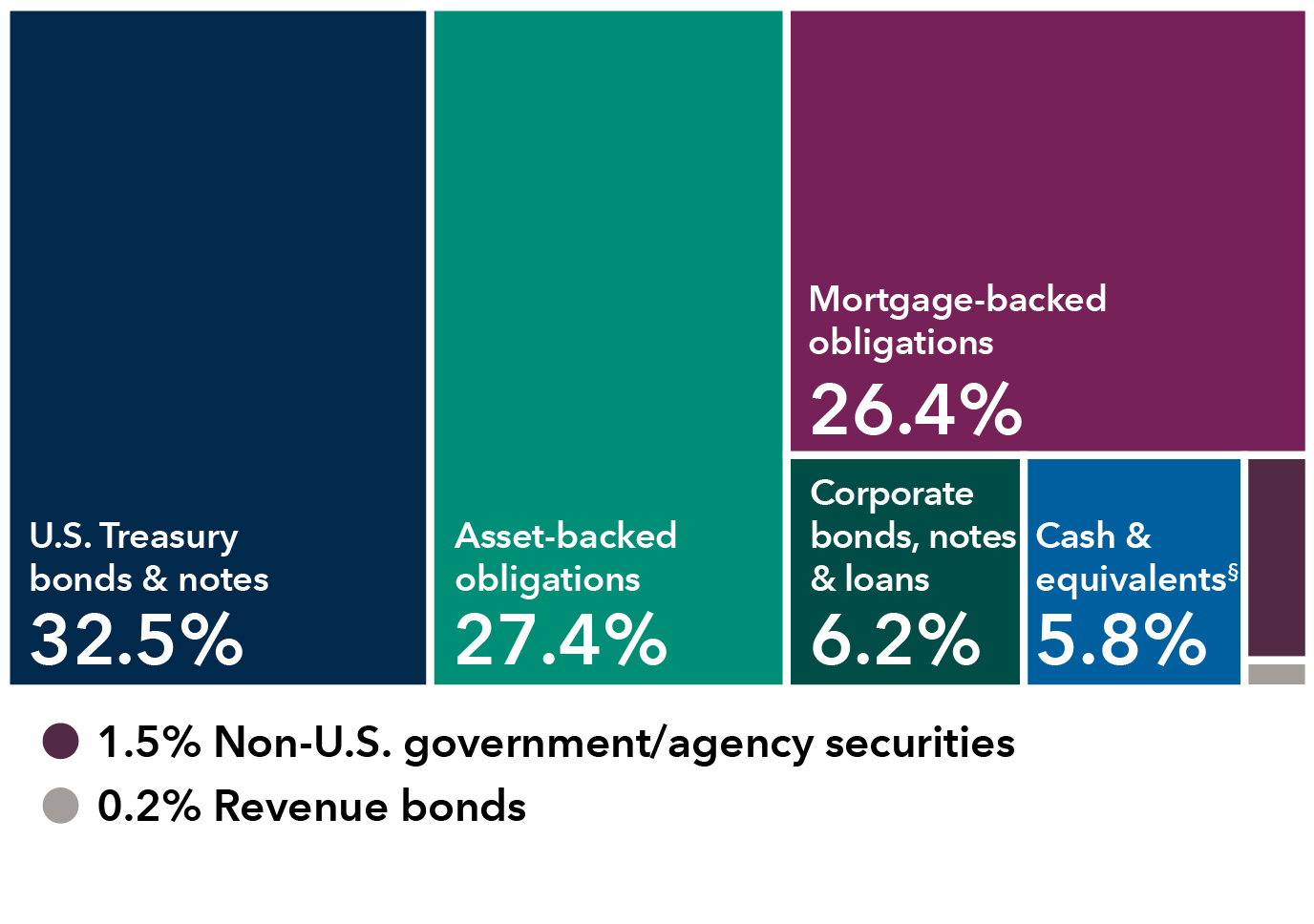
Data as of 12/31/24.
§Cash and equivalents includes short-term securities, accrued income and other assets less liabilities. It may also include investments in money market or similar funds managed by the investment adviser or its affiliates that are not offered to the public.
IBAFX
INTERMEDIATE BOND FUND OF AMERICA (F-2)
94%
Positive 3-year rolling (monthly) returns since inception
0%
of the fund’s holdings are rated BB+ and below
Diversify to help improve returns
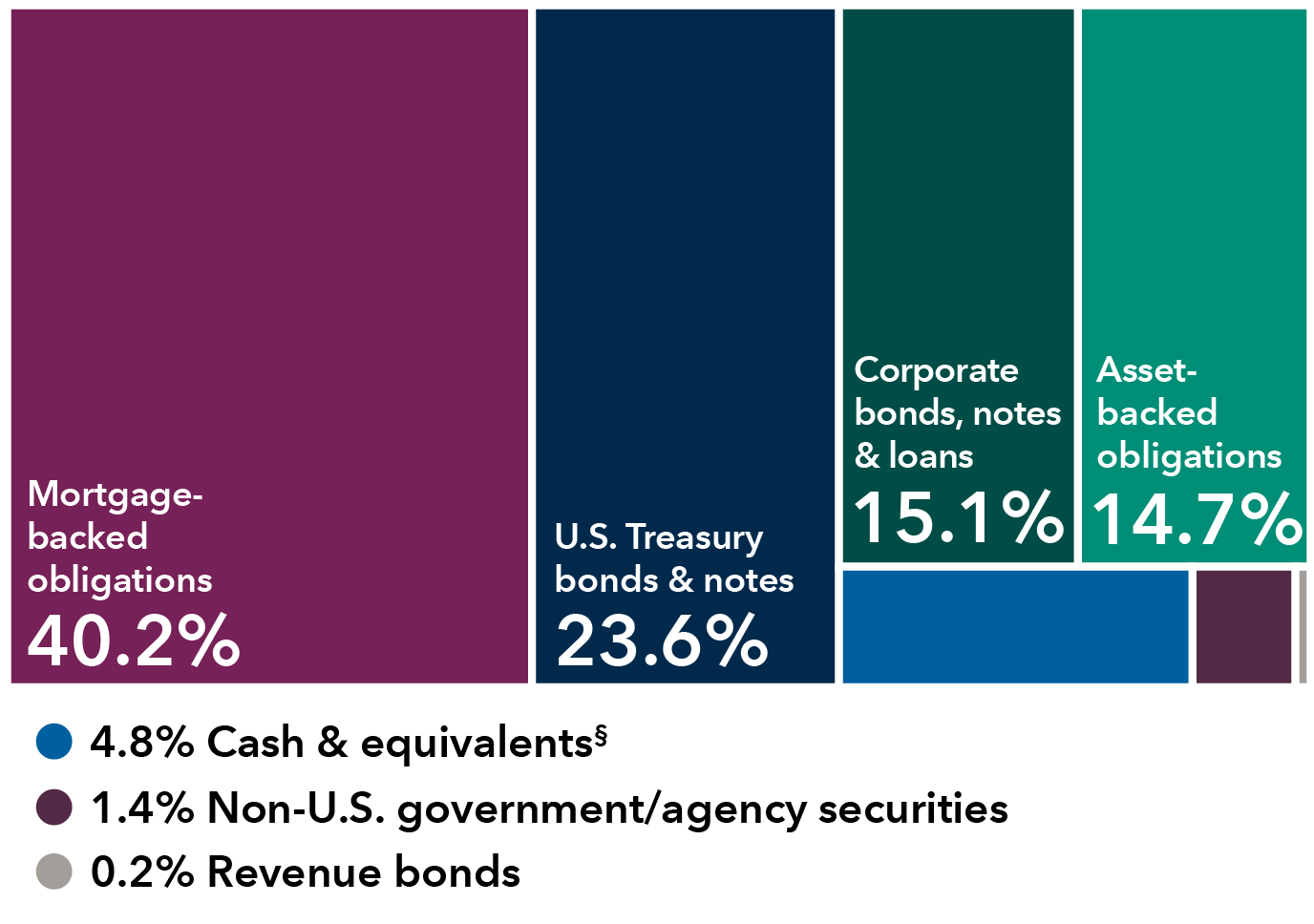
Data as of 12/31/24.
§Cash and equivalents includes short-term securities, accrued income and other assets less liabilities. It may also include investments in money market or similar funds managed by the investment adviser or its affiliates that are not offered to the public.
LTEFX
LIMITED TERM TAX-EXEMPT BOND FUND OF AMERICA (F-2)
94%
Positive 3-year rolling (monthly) returns since inception
0%
of the fund’s holdings are rated BB+ and below
Diversify to help improve returns
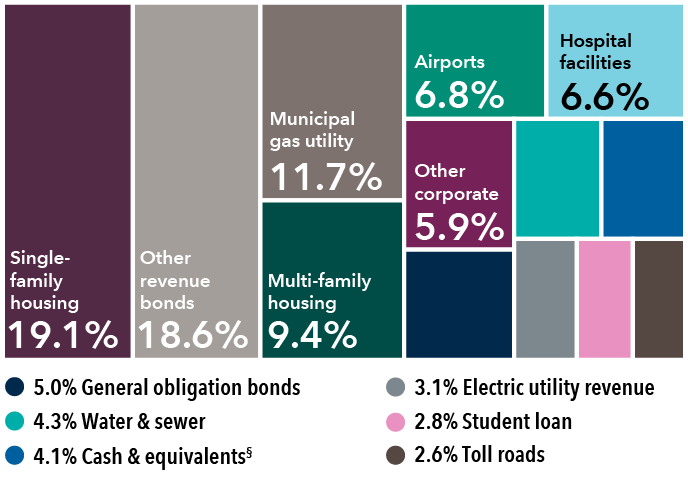
Data as of 12/31/24.
§Cash and equivalents includes short-term securities, accrued income and other assets less liabilities. It may also include investments in money market or similar funds managed by the investment adviser or its affiliates that are not offered to the public.
ASTFX
AMERICAN FUNDS SHORT-TERM TAX-EXEMPT BOND FUND (F-2)
91%
Positive 3-year rolling (monthly) returns since inception
0%
of the fund’s holdings are rated BB+ and below
Diversify to help improve returns
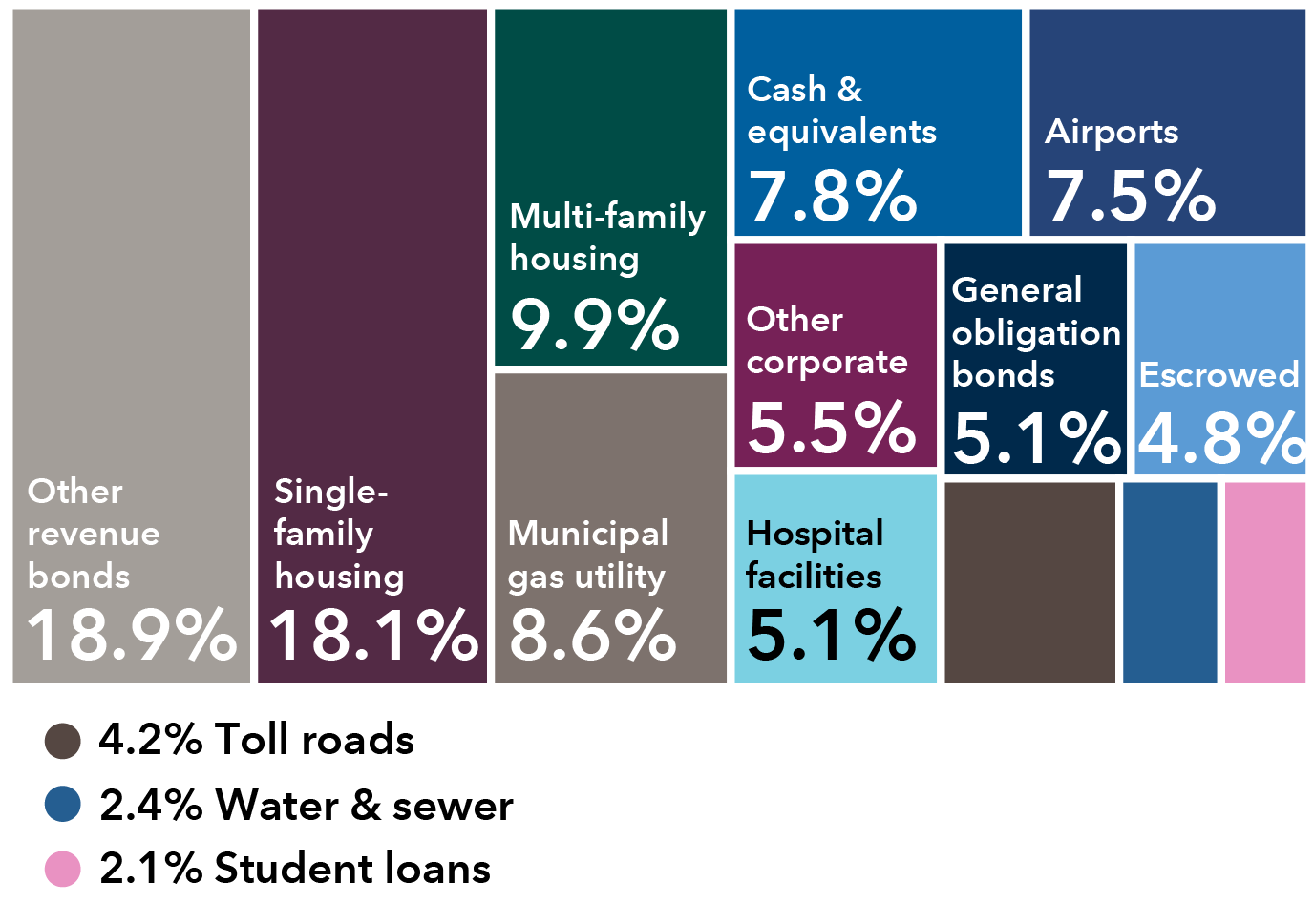
Data as of 12/31/24.
§Cash and equivalents includes short-term securities, accrued income and other assets less liabilities. It may also include investments in money market or similar funds managed by the investment adviser or its affiliates that are not offered to the public.
CGSD
CAPITAL GROUP SHORT DURATION INCOME ETF
0.9%
of the fund’s holdings are rated BB+ and below
Diversify to help improve returns
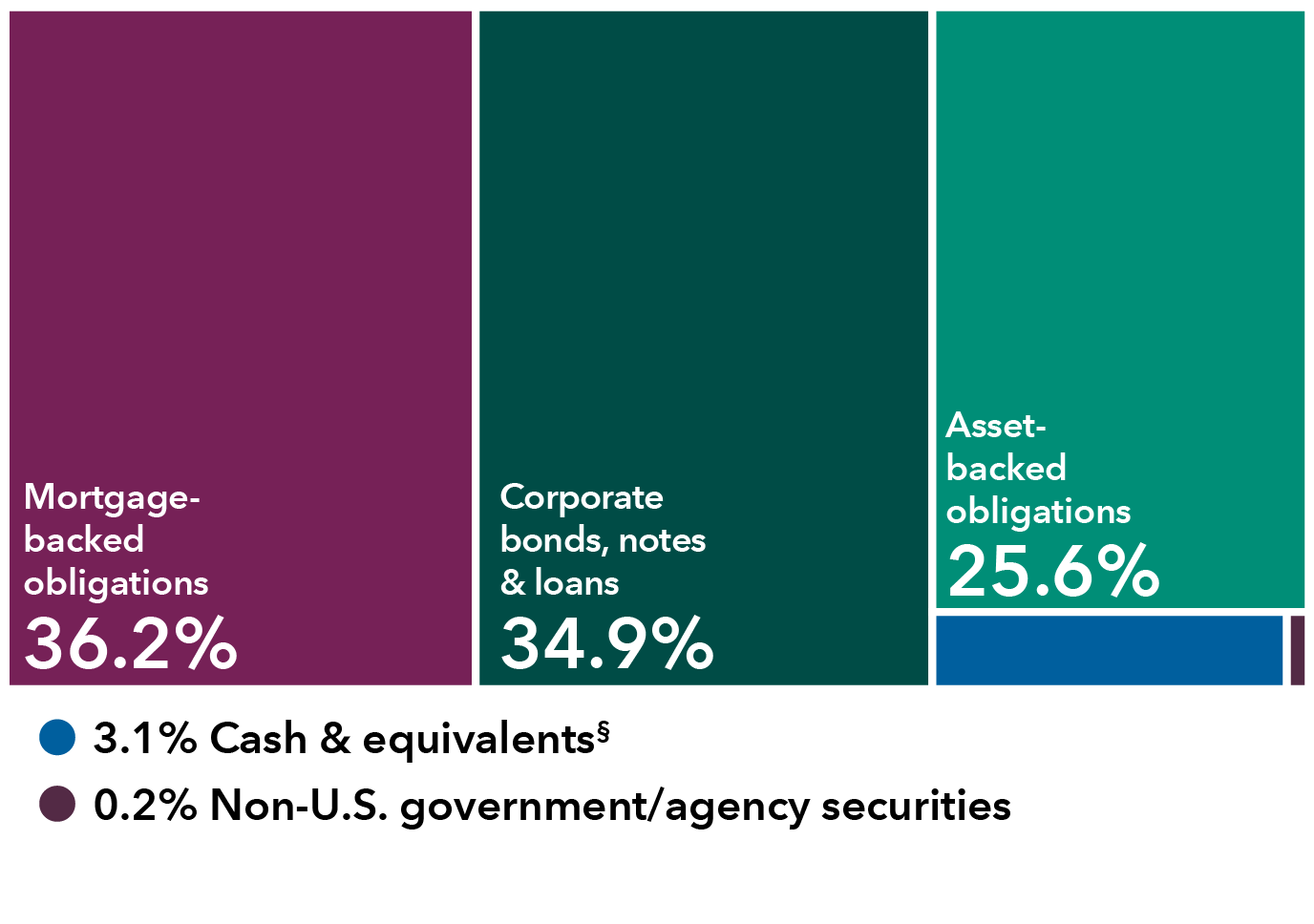
Data as of 12/31/24.
§Cash and equivalents includes short-term securities, accrued income and other assets less liabilities. It may also include investments in money market or similar funds managed by the investment adviser or its affiliates that are not offered to the public.
FUND DETAILS
Our short-term suite
Seek attractive yields with our range of taxable and tax-exempt offerings. Durations range from about 2.1 to 4.2 years.
Short-Term Bond Fund of America (F-2)
SBFFX
Intermediate Bond Fund of America (F-2)
IBAFX
Limited Term Tax-Exempt Bond Fund of America (F-2)
LTEFX
American Funds Short-Term Tax-Exempt Bond Fund (F-2)
ASTFX
CGSD: Short duration for ETF investors
Our short-term bond ETF aims to provide attractive income while maintaining a focus on stability
Capital Group Short Duration Income ETF (CGSD)
The fund invests in high-quality, income-oriented bonds, including corporate bonds and asset-backed securities, as it seeks higher income than enhanced cash investments. While there’s latitude in security selection that promotes a well-diversified portfolio, holdings are primarily rated investment-grade (BBB/Baa or above). The fund aims for a low duration profile which may help limit exposure to interest rate volatility.
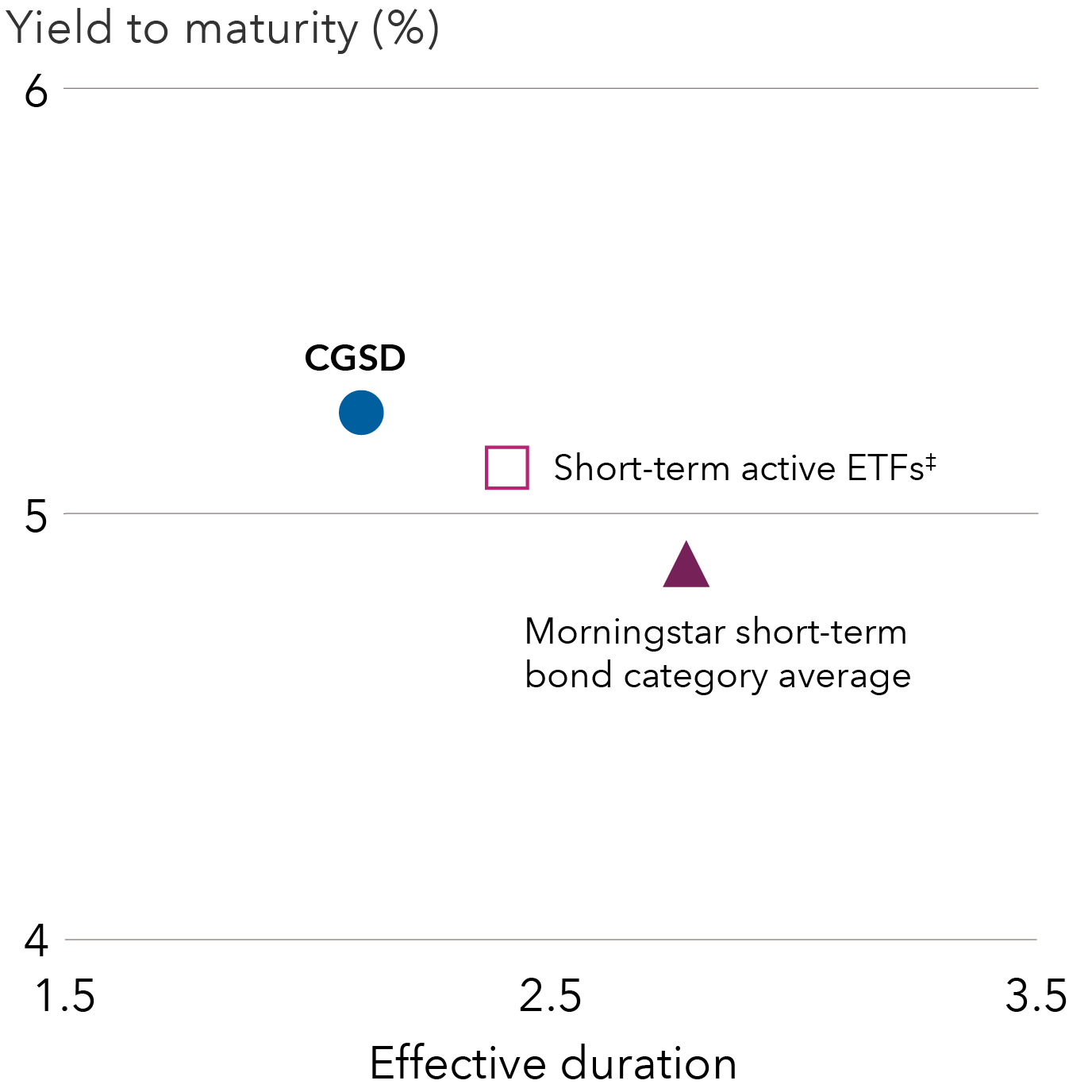
Learn more about CGSD and how it blends a pursuit of higher income with low interest rate sensitivity.
2.1
Years duration
5.2%
Average yield to worst
0.25%
Expense ratio1
$874
Million AUM
Inception: 10/25/22
Data as of 12/31/24. ETF statistics based on NAV.
Sources for graph above: Capital Group, Morningstar.
‡Short-term active ETF figures are median values for the actively-managed ETFs listed in the Morningstar short-term bond category.
Explore further
View the latest insights from our team of investment professionals and delve deeper into our offerings.

BROCHURE
Figures shown are past results and are not predictive of results in future periods. Current and future results may be lower or higher than those shown. Investing for short periods makes losses more likely. Prices and returns will vary, so investors may lose money. View mutual fund expense ratios and returns. View ETF expense ratios and returns. View current mutual fund SEC yields. View current ETF SEC yields.
#Cash-like instruments like money market funds seek to provide some level of income. Bond funds can, at times, include an objective of providing greater income versus those cash-like investments, but may carry more risk. Money market funds often invest in higher quality, short-term investments issued by the U.S. government and corporations compared to the increased credit, interest rate and default risks that investors may be exposed to when holding bonds that have relative higher duration (interest rate risk) and lower credit quality. Short-term bond funds have exposure both to interest rate and credit risk. They invest primarily in sectors such as U.S. Treasuries, corporate bonds, securitized credit and municipal bonds. U.S. Treasuries are bonds backed by the U.S. government but prices may fluctuate based on interest rate changes. Corporate bonds contain both interest rate risk and credit risk, with debt payments reliant on the companies that issue the bonds. Securitized credit poses risks tied to their underlying investments in mortgages or other loans. Municipal bonds contain interest rate risk, credit risk, with debt payments reliant on municipal issuers. Payments and return of bond principal aren’t guaranteed, as markets and valuations can fluctuate. Money market funds are not guaranteed but seek to maintain a stable net asset value of $1 per share.
Bloomberg U.S. Government/Credit 1-3 Years Index is a market-value weighted index that tracks the total return results of fixed-rate, publicly placed, dollar-denominated obligations issued by the U.S. Treasury, U.S. government agencies, quasi-federal corporations, corporate or foreign debt guaranteed by the U.S. government, and U.S. corporate and foreign debentures and secured notes that meet specified maturity, liquidity and quality requirements, with maturities of one to three years.
Bloomberg U.S. Corporate High Yield 2% Issuer Capped Index covers the universe of fixed-rate, non-investment-grade debt. The index limits the maximum exposure of any one issuer to 2%.
The Bloomberg U.S. Treasury Index measures U.S. dollar-denominated, fixed-rate, nominal debt issued by the U.S. Treasury. Treasury bills are excluded by the maturity constraint, but are part of a separate Short Treasury Index. STRIPS are excluded from the index because their inclusion would result in double-counting.
The Bloomberg U.S. Treasury: Long Index measures US dollar-denominated, fixed-rate, nominal debt issued by the U.S. Treasury with 10 years or more to maturity.
1. The expense ratios are as of each fund's prospectus available at the time of publication. The expense ratio for ETFs is estimated.
The average yield to worst is the lowest yield that can be realized by either calling or putting on one of the available call/put dates, or holding a bond to maturity.
When applicable, results reflect fee waivers and/or expense reimbursements, without which they would have been lower and net expenses higher. Please refer to capitalgroup.com for more information. Read details about how waivers and/or reimbursements affect the results for each fund. View results and yields without fee waiver and/or expense reimbursement.
Duration indicates a bond fund’s sensitivity to interest rates. Higher duration indicates more sensitivity. Effective duration is a duration calculation for bonds that takes into account that expected cash flows will fluctuate as interest rates change.
The after-tax (or tax-equivalent) yield of a municipal bond investment is the yield a taxable bond would have to offer to equal the same amount as the tax-exempt bond. Highest tax rate assumes the 3.8% Medicare tax and the top federal marginal tax rate for 2023 of 27%.
The five-year standard deviation measures the variability of returns over the preceding 60-month period.
Bloomberg U.S. Aggregate Index represents the U.S. investment-grade fixed-rate bond market. This index is unmanaged, and its results include reinvested dividends and/or distributions but do not reflect the effect of sales charges, commissions, account fees, expenses or U.S. federal income taxes.


